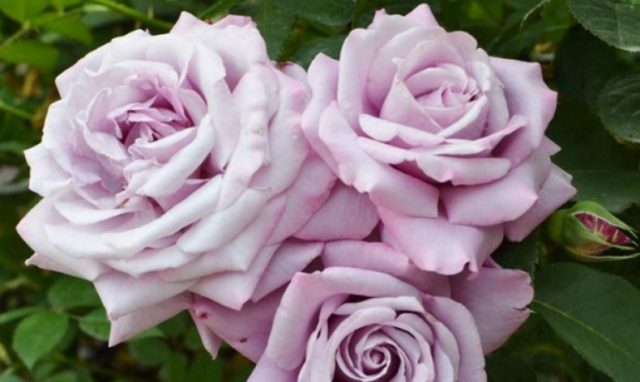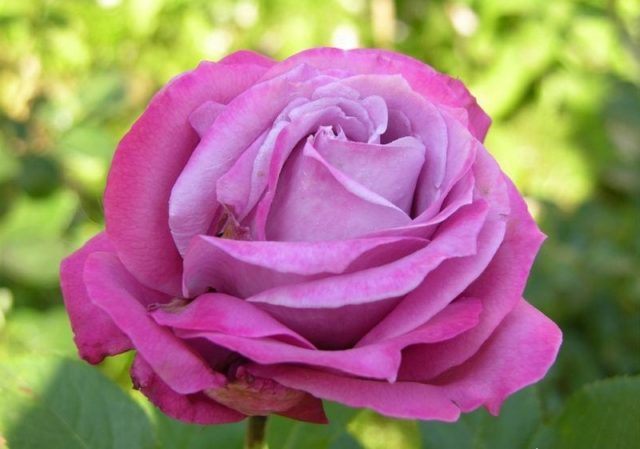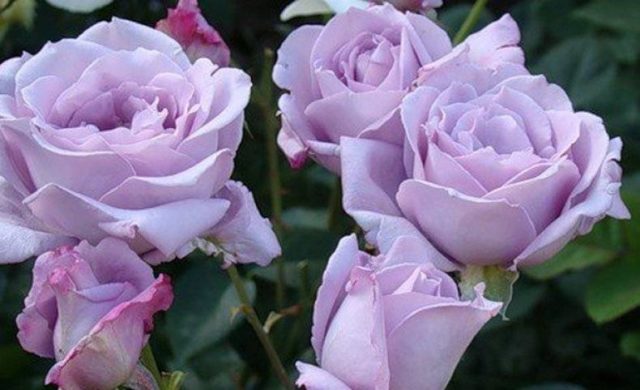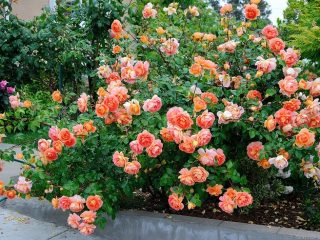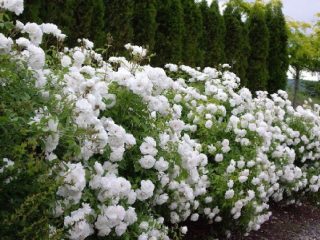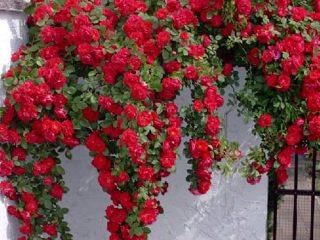Content
Blue and cyan roses still remain a pipe dream of breeders and rose growers. But sometimes specialists manage to come quite close to its implementation. One example is the Blue Perfume rose, which stands out for its very unusual lilac-lavender shade of petals. It belongs to the hybrid tea category, so caring for it is relatively easy.
History of selection
Blue Parfum is a rose from the hybrid tea category, bred in the world famous German nursery Tantau quite a long time ago - in 1977. Some experts, based on the specifics of flowering, classify it as “floribunda”. In addition to the official name, it is sometimes found under the names Blue Perfume, Violette Parfum.
Nothing like blue and light blue roses exists in nature. They are bred exclusively through selective breeding. The process of creating Blue Perfume lasted almost 10 years. Experts have introduced the viola (“pansy”) gene into the plant’s genotype, which “transmits” the pigment delphinidin, which provides flowers with a lilac, blue, and violet hue in natural conditions.
Description of rose Blue Perfume and characteristics
The name of the Blue Perfume rose immediately “informs” its two main characteristics, thanks to which the variety enjoys sustained popularity among flower growers. Firstly, this is a very unusual shade of flowers. Only formed buds are colored in a rich purple tone. As they bloom, they gradually lighten to crimson. When fully opened, the outer petals remain lilac-raspberry, while the inner petals fade to lilac and lavender.
The second feature is the very rich, literally “intoxicating” scent of rose Blue Perfume. The aroma is typically “pink”, a cross between carnation, lily of the valley and violet. Experts detect honey and spicy (cinnamon, vanilla) notes in it.
The rose bush Blue Perfum is low, compact, densely leafy. Almost without the help of a gardener, it takes the correct shape, close to a ball with a diameter of 60-80 cm (in optimal conditions it can grow up to 1 m). The leaves are a rich, dark green color that creates a striking contrast with the flowers.
The buds are elongated. Most often there is one flower per stem, occasionally there are “inflorescences” of 2-3 pieces. Blooming Blue Perfume roses are very elegant, classically glass-shaped, reaching 10-11 cm in diameter. There is a slight wave along the edge of the petals, sometimes they are even “torn.”
The first buds open at the junction of June and July. The “wave” of Blue Perfume flowering lasts for 3-3.5 weeks. Then, until the end of summer, individual roses appear. And if August is warm, you can see a second “wave” in early September.
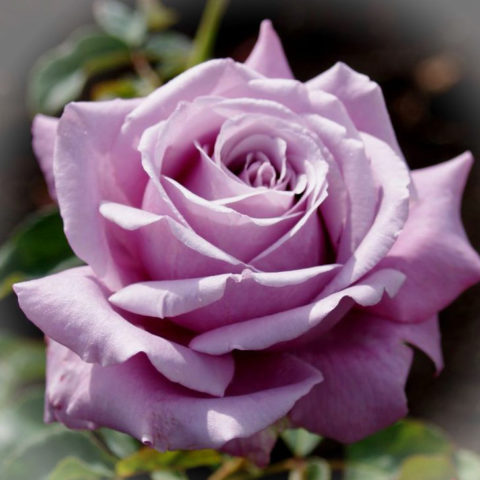
The unusual color of the Blue Perfume rose will not allow the bush to get lost even in the largest rose garden
The variety demonstrates good resistance to fungal diseases. Rose Blue Perfume becomes infected with powdery mildew and black spot only when damp, cold weather is established for a long time, conducive to their development. Pests are also not particularly interested in bushes. Rain is much more dangerous for flowers - they quickly become torn and crumble, and the buds fall off.
Advantages and disadvantages of the variety
The undoubted advantages of the Blue Perfume rose variety include:
- unusual and rare shade of flowers;
- compactness of the bush, neatness of its crown;
- very good cold resistance for roses;
- repeated flowering, very abundant in the first “wave”;
- the ability to survive heat and drought without much harm (as a result - not capriciousness in care);
- good resistance against diseases typical for the crop, rare pest attacks.
There are much fewer disadvantages:
- instability of flowers and buds against rain;
- unsuitability of roses for cutting (stems are too short).
A relative disadvantage is that when planted in direct sunlight, the rose shade of Blue Perfume fades. But some gardeners, on the contrary, like it - the contrast between the shades of the outer and inner petals increases.
Reproduction methods
The optimal propagation method for Blue Perfume hybrid tea roses is cuttings. It makes no sense to grow them from seeds, since the unique shade is not transmitted to the seedlings.And when dividing a bush, it is easy not to get two new specimens, but to destroy the only one available (especially in the absence of experience).
The most appropriate time for the procedure is the end of the first “wave” of flowering. The Blue Perfume rose cutting is the central part of an annual stem 12-15 cm long. The upper cut is made horizontal, the lower cut at an angle of about 45º. Then proceed like this:
- Cut off the leaves completely from the lower third of the cutting. Shorten the remaining ones by about 2/3.
- Sprinkle the oblique cut with a powdered root formation stimulator or place it in a container with its solution for 2-3 hours.
- Plant the cuttings at an angle of about 60º to a depth of 2-2.5 cm in a mixture of peat chips and any “leaking agent” (perlite, vermiculite, sand, coconut fiber). Cover the top, creating a greenhouse.
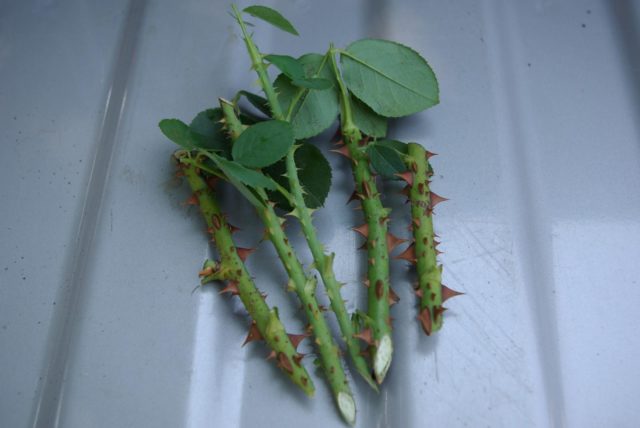
It is better to harvest Blue Perfume rose cuttings in the early morning, when the plant tissues are maximally saturated with moisture.
Growing and care
One of the undoubted advantages of hybrid tea varieties is their comparative ease of care. This also applies to the Blue Perfume rose. But there are still important nuances of agricultural technology:
- Watering. In the first season after planting and during budding - every 2-3 days. In other cases - about once a week (taking into account precipitation), allowing the substrate to dry 4-5 cm deep. Rose Blue Perfume is watered exclusively at the root. Use soft, non-cold water.
- Fertilizer application. Feeding is carried out 4 times per season.At the beginning of the active growing season, organic matter (humus, compost) is added to the soil to maintain soil fertility and nitrogen fertilizers necessary for growing green mass. During the formation of buds and after the end of the first wave of flowering, Blue Perfume uses complex fertilizers for roses. At the end of September, the bush needs phosphorus and potassium (one-component, special “autumn” fertilizers or wood ash).
- Trimming. Rose Blue Perfume does not need forced formation. But it needs sanitary cleaning. Before active sap flow begins in the spring, they get rid of frozen shoots that have broken under the weight of snow. In the fall, when the plant “goes into hibernation,” faded buds and dried stems damaged by diseases and pests are cut off.
- Preparing for winter. The construction of a special shelter for the Blue Perfume rose is only necessary if the temperature is predicted to be below -25 ºС. Otherwise, you can limit yourself to adding humus to the base of the bush (form a mound 15-20 cm high). In more severe conditions, the tree trunk circle is covered with the same humus, peat or compost (layer 10-12 cm), spruce branches or fallen leaves are thrown on top. The branches of the bush are tied, a special cover is put on it, a cardboard box, a wooden box (the dimensions of the Blue Perfume rose allow this) or wrapped with breathable material in 2-3 layers.
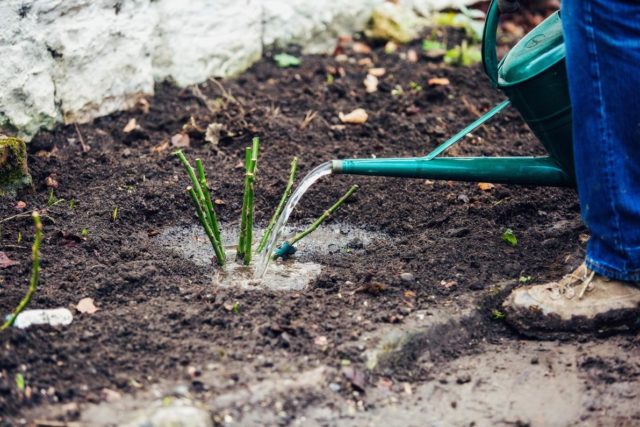
From the moment of planting, it is better to water Rose Blue Perfume by hand and at the root in order to “get used” to this method
Pests and diseases
The Blue Perfume variety is not susceptible to the most dangerous diseases for roses, so the bush does not require regular preventive treatments with proper care. Only if the weather is favorable for the development of fungi for a long time (a month or more), it is recommended to spray the leaves and soil under the plant with a solution of any fungicide every 12-15 days.
Pests typical of roses - spider mites, caterpillars, leaf rollers - pay attention to Blue Perfume in rare cases. This does not apply only to the “omnivorous” aphid. Small insects of lime, light green, brown, and black colors attack the bush en masse. Most often they concentrate on the tips of shoots, buds, and blossoming leaves. The aphids feed on the sap of the plant, and the affected tissues gradually dry out.
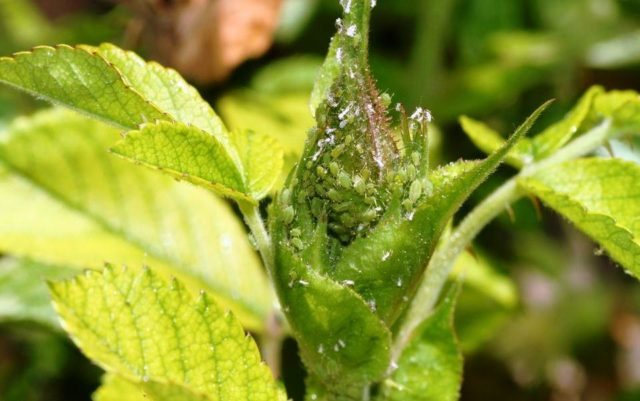
Aphids greatly spoil the appearance of rose bushes, and if nothing is done, the plant will die
To prevent infection, you can use folk remedies by spraying the rose:
- foam of laundry soap;
- any sharp-smelling infusions (pine needles, garlic, onions, orange peel, wormwood, tobacco);
- a solution of ordinary or soda ash;
- infusion of wood ash.
There are plants that attract aphids. They need to be planted away from the Blue Perfume rose:
- mulberry;
- bird cherry;
- viburnum;
- nasturtium;
- petunia;
- mallow;
- poppy.
But any herbs (especially mint, parsley, fennel, thyme), as well as sage, daisies, lavender, marigolds are good “neighbors” for the Blue Perfume rose. Aphids do not like their smell, so they will avoid the flowerbed.
Application in landscape design
The unusual shade of the flowers turns the Blue Perfume rose into a variety that is quite suitable for planting as a tapeworm, despite the modest dimensions of the bush. During abundant flowering on a green lawn, it looks very impressive.
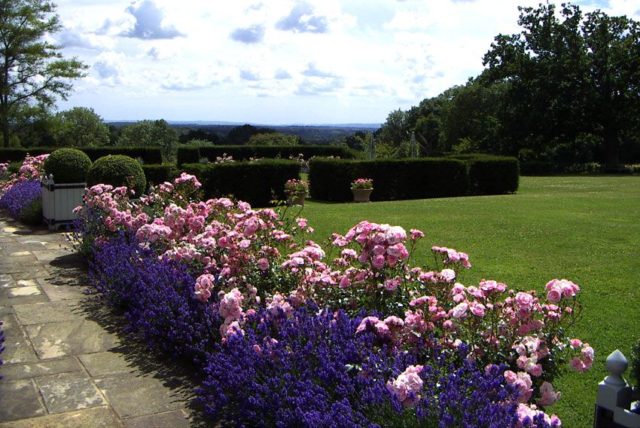
The short stature of the Blue Perfume rose allows you to create a border from plants
A suitable background for the Blue Perfume rose will be created by any not too tall coniferous plants (juniper, thuja, boxwood) and ornamental shrubs (cotoneaster, barberry). In both cases, it is desirable that their crown be dark.
Judging by the description of the Blue Perfume rose, as well as photos and reviews from flower growers, the most harmonious shade of its petals combines with white, yellow, and pink. You can choose any flowers in this range, “diluting” the flowerbed with decorative deciduous flowers with bluish or silver-gray foliage.
Conclusion
Rose Blue Perfume stands out for its original petal color, even among hybrid tea varieties, which are distinguished by a fantastic variety of shades. She also has other advantages. This determines its popularity among several generations of rose growers, despite the constant “competition” from new breeding products. It is possible to care for it even if you do not have a lot of experience; the flower is not particularly susceptible to diseases and pests.
